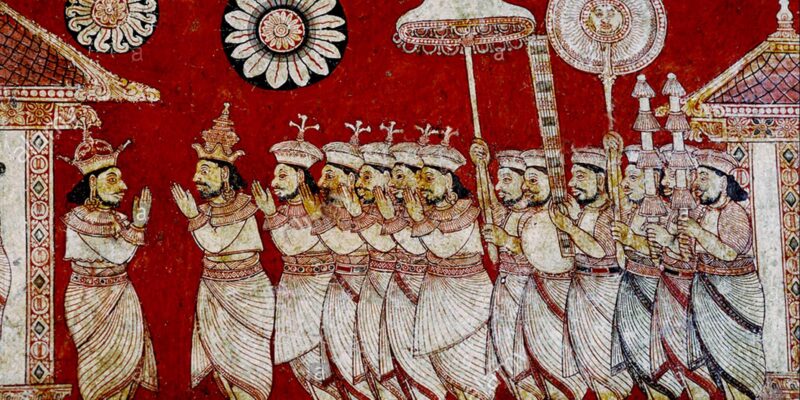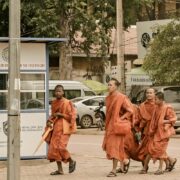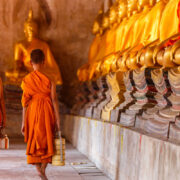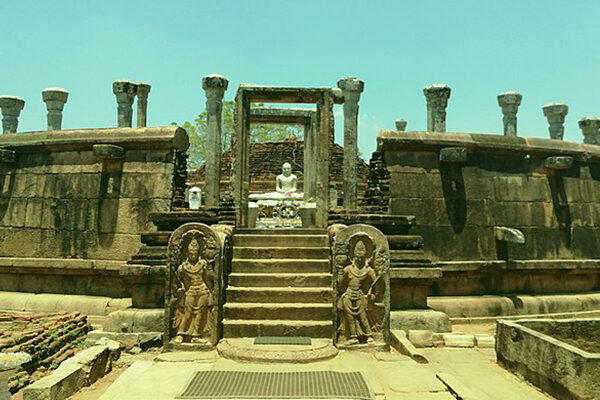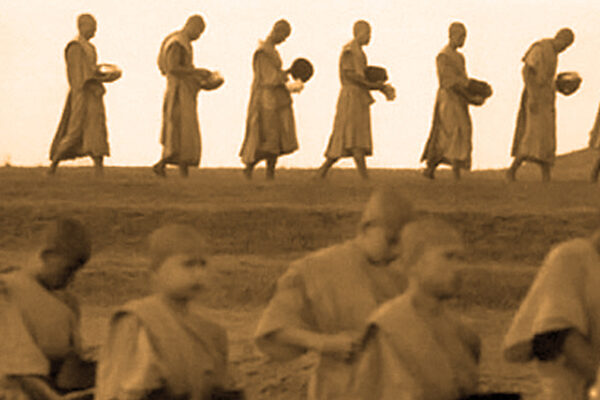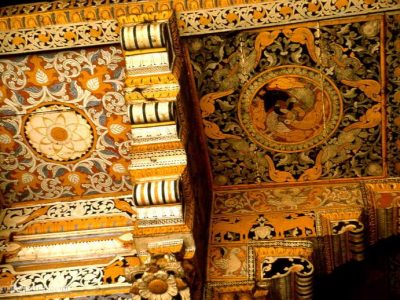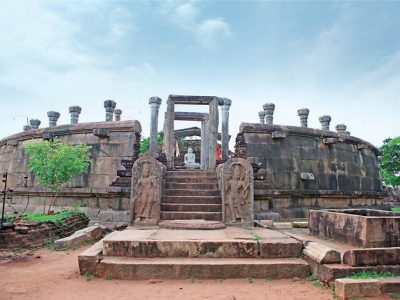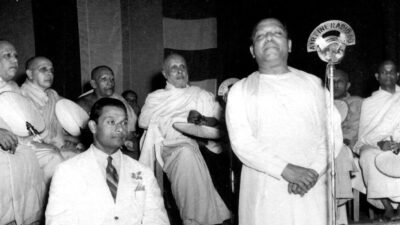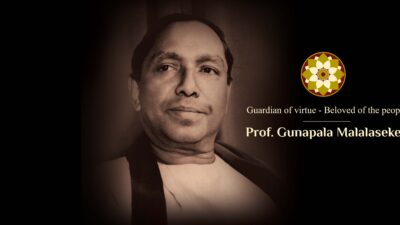Sri Lanka is internationally recognised for its ancient frescoes and temple paintings. Artists of Ancient Sri Lanka used very advanced techniques and natural plant-based pigments & colour combinations to create high-quality murals which can be seen even today with no or minimum restorations. For example, Sigiriya Lion Rock displays an amazing collection of murals which are believed to have be drawn when Sigiriya was a fortress castle for a Sri Lankan King (in 477 – 495 CE). These fine-art murals were painted on the face of the rock depicting ladies whom were believed to be the King’s consorts. Out of many paintings originally drawn, only a few were preserved until today, and internationally renowned as ‘Sigiriya Frescoes’ Kandy was the last Kingdom of Sri Lanka (period 1469–1815), and Kanyan era paintings were mainly found in Temples and Shrines built under royal patronage. Hence most of the temple constructions and restorations were done by the King’s royal sponsorship, paintings and artistry considered as highly demanded professions. Most of these murals were drawn in Buddhist Temples, therefore paintings reflect or represent an event or scene of Lord Buddha’s life and Bodhisathwa’s past lives (Jataka stories), celestial beings, religious pagent, or portraits of Kings and Queens. Kandyan Kings ruled a large part of Sri Lanka, and they sponsored numerous restorations & constructions projects of Temples and religious building in the Kingdom. As a result, Kandyan era painting techniques can be seen in many parts of Sri Lanka thus establishing a unique Sri Lankan identity. These paintings can be seen at: the temple of the tooth Kandy, Degaldoruwa Temple, Ridi Viharaya Temple, Gampola Lankathilaka Viharaya, Yapahuwa Rajamaha Viharaya and many other Ancient Buddhist temples in upcountry and southern parts of Sri Lanka.
Kandyan Artists used few colours including Red, Yellow, Green, White, Black, Gold and Blue. These colours were natural and extracted from plants’ components & fruits, natural oils, minerals and clay types. All these paints, as well as brushes, were produced by the Artists themselves.
Most of the painting walls were smoothened by special white or light colour clay, providing a perfect base to paint frescoes. Most of the frescoes were drawn in horizontal rows, which run along the entire painting surface. These horizontal rows were sectioned to depict a specific event or scenery. An ancient building with inner walls presenting sections of many horizontal rows from top to bottom, containing numerous colourful murals providing an unforgettable and spectacular view.
Kandyan era Artists used special kinds of traditional decorations such as traditional flower & leaf patterns and, trees or frames to separate a scene or section within the horizontal row so that viewers can relate the painting to a specific event. Most paintings were flat and all components of a painting (face, legs, hands and things they carry) facing one direction. Flat flower type decorations, traditional flowers & leaf patterns, clouds, circular shape Sun & Moon depictions, trees and other traditional decorations were used to fill gaps between images. Dark Red backgrounds were used for many paintings. Most of these paintings were outlines with very fine black or red line, to separate the image from the background.
Retrieved from: alokasw.wixsite.com

